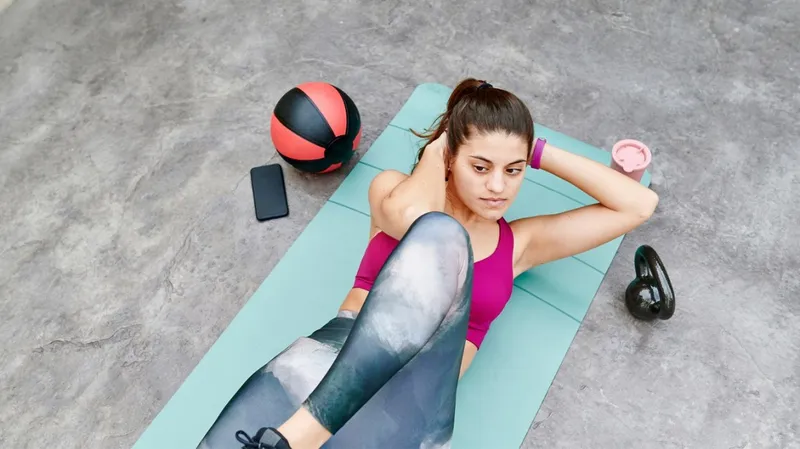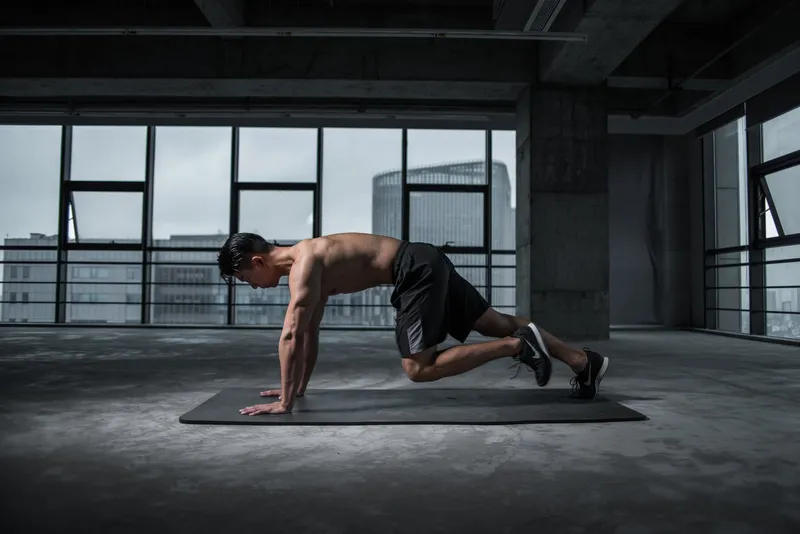Sustainable fitness: The importance of implementing it in your everyday life
Fitness has proven to be a necessity, and medical professionals and scientists have a critical role to play in acknowledging, understanding, and explaining healthy and sustainable fitness options to their patients.
The COVID-19 pandemic has catapulted the fitness industry into the healthcare sector once and for all. Gone are the days when only the fit became fitter, or fitness was only discussed with a personal trainer.

Fitness has proven to be a necessity, and medical professionals and scientists have a critical role to play in acknowledging, understanding, and explaining healthy and sustainable fitness options to their patients.
This is not about a movement toward holistic health — this is about a movement toward health itself, which, in its very definition, is holistic and should be treated as such.
The biggest shift one can anticipate in the health and fitness industry is the movement from occasional fitness toward sustainable fitness.
While beach holidays and weddings have started to make their comeback, getting into shape in time for larger events is less relevant in an environment where dressing up and looking our best is still rather infrequent.
Moreover, a global pandemic has us all tuning in to how we feel, physically and mentally. Fitness options will increasingly revolve around methods that clients can participate consistently and engage in for many years to come. Aesthetics will take a back seat while feeling strong, mentally relaxed, and empowered will be paramount.
Given that fitness won’t revolve around deadlines, low-impact but high-intensity routines that sculpt muscle, trim waistlines, and promote overall functionality without bone and joint pain will experience higher demand. People are more likely to be patient with results in exchange for their overall musculoskeletal and mental health.

Source: Shutterstock
There are several contributors to making fitness sustainable. One of those is access. With the inability of fitness studios to remain open consistently, many top fitness brands have been able to pivot to offer their class experiences virtually.
Brands are investing capital they would have otherwise spent on physical expansion to create omnichannel businesses filled with quality virtual experiences for clients. Keeping in mind that attention spans are difficult to maintain online, workout routines are being continuously modified to keep clients engaged.
We will experience a rise in both live virtual workouts and video-on-demand services, given the first format allows for individualised form correction for clients and a community-building element, while pre-recorded content allows for increased access anytime, anywhere.
The convenience of being able to get a quick fix workout is gratifying and will continue to make fitness more approachable for all. The brands that can offer quality live and pre-recorded content, incorporating engaging rhetoric, muscle confusion, and delivering results consistently, will be the ones that clients keep coming back for more.

Another contributing factor toward sustainable fitness is the physicality of the workout method itself. The convenience factor of virtual fitness outlined above also plays a role in the rising popularity of the “no equipment” trend.
Increasingly, people are seeking out fitness options that require little to no equipment as they work out more in their homes, where they may not have access to the equipment they would otherwise find in boutique fitness studios or gyms.
As a result, workout methods that can be easily done with little to no equipment will be the most sustainable in the long run.
While vaccination may lead to the increased studio and gym footfalls in 2021 compared to 2020, many will grow accustomed to methods that require minimal equipment once they realise how much strength, flexibility, and durability one can build using their body weight as resistance. Workouts that incorporate body-weight resistance and train for everyday function will also increase in popularity as a result.
Another aspect of physicality, which must be highlighted in deciphering sustainable fitness, is the emphasis given to the workout method that puts on long-term musculoskeletal health.
Attention to bone density will determine a workout method’s sustainability. Due to the tendency, Indians have toward lower bone density compared to most populations globally, this aspect of a workout is highly relevant to how Indians can stay fit and healthy in the long term.

While weight-bearing aerobic exercises like walking, dancing, and elliptical machines that work directly on the bones in your lower body to slow mineral loss are beneficial, they don’t provide weight-bearing effects to your whole body.
Strength training exercises, using either free weights, resistance bands, or your whole body weight for the upper body and spine, are equally important in osteoporosis prevention and maintaining musculoskeletal health.
Flexibility and stability/balance exercises are also often neglected in many exclusively cardio workouts, which are critical to bone health, especially in preventing falls and further injury to those that already have fragile bones.
A combination between weight-bearing aerobic exercises, strength training exercises, flexibility training, and stability exercises, together, are beneficial for bone density and fitness sustainability.
Methods that incorporate all of these elements effectively are not just beneficial in the prevention of bone loss and maintenance of musculoskeletal health, but allows people to continue with safe and effective forms of exercise as they age.
High impact exercises like running and jumping put people with osteopenia and osteoporosis at risk for compression fractures in the spine, besides exercises that involve deep bending and twisting like golf, tennis, and certain yoga positions; so low-impact methods are more sustainable in the long run.
An important aspect of our health, impacted by low bone density, which we might not immediately realise, is our posture. Poor posture can contribute to complications during ageing and our overall health.
Given our current way of life, which involves many hours stooped over desks and computers, it is imperative to select fitness methods that focus on postural muscles for our wellness. The only way to maintain or improve our posture is to do targeted resistance exercises that force us to build strength in our core — from our hips to the base of our necks in both the front and back of our bodies.
Maintaining posture helps us fight gravity and avoid other aches and pains that come later in life but also aids in autonomic functions like breathing and digestion.
Access, convenience, and long-term physical and mental health are the primary factors that determine sustainable fitness.
Edited by Suman Singh









